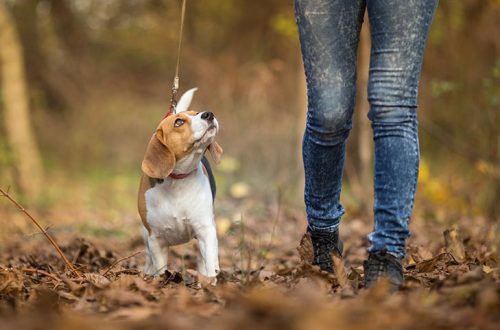
Joint diseases and chondroprotectors for dogs and cats
Does the puppy’s ears not stand up, paws are tangled? Is your older dog limping and refusing to walk? Cats stopped being playful, barely walking and meowing? After visiting the veterinarian, chondroprotectors were prescribed – let’s find out what it is and what it is for?
Contents
Diseases of the joints
The most common diseases of the organs of movement include osteoarthritis, discopathy, discospondylosis, osteodystrophy, hip dysplasia, and osteochondrodysplasia and trauma. Most often, these diseases occur in older animals. However, there is also a breed predisposition to diseases of the musculoskeletal system. Long-bodied and short-legged breeds of dogs and cats (Dachshund, Basset, Corgi, Pekingese, Skye Terrier, Dandie Dinmont Terrier, Munchkin, Minskin and Dwelf cats), and dogs with a strongly twisted or absent tail (English Bulldog, Pug, Basenji ) there is a high risk of intervertebral disc displacement.
Labradors, Rottweilers, Chow Chows, Shar Peis are predisposed to osteoarthritis. Osteoarthritis is characterized by destruction of the joints.
In dogs of small breeds – Spitz, Pekingese, pygmy poodles, miniature schnauzers, Yorkshire terriers, French bulldogs, the most common Lagg-Calva-Perthes disease, characterized by necrosis of the head and neck of the femur.
Scottish fold cats are predisposed to osteochondrodysplasia (the risk is especially high if this breed is not properly bred, the mutation that causes fold ears when crossing two fold cats gives an almost 100% guarantee of osteochondrodysplasia of Scottish cats), Bengal cats and Maine Coons, as well as fast-growing puppies of large and giant breeds (Alaskan Malamute, Bernese Mountain Dog, Great Dane, German Shepherd, Mastiffs, etc.)
Hip dysplasia is the most common disease in large breed dogs. This is a hereditary disease, during the period of active growth, the mass of the animal increases, and the bones do not keep up with such growth, dogs of large breeds (Central Asian Shepherd, German Shepherd, Labrador) are especially susceptible. In conjunction with frequent physical training, the joints do not cope with such a load and are deformed. The risk increases with improper nutrition: poor-quality dry food, feeding exclusively on meat and with the wrong ratio of calcium and phosphorus in the diet. If you have a large breed dog, you need to be very careful to monitor the manifestations of signs of dysplasia in it. Obvious symptoms – lameness and pain – may not appear immediately. And when taking a puppy from a kennel, you must definitely find out about the parents of the new pet. Dysplasia in a neglected state can only be cured by surgery.
Joint injuries in dogs and cats: fractures, bone fractures, dislocations, sprains and rupture of ligaments, occur during unsuccessful jumps, falls, bumps.
Symptoms of joint diseases
- No activity, the animal carefully steps on its paws
- Constant lameness
- Periodic appearance and disappearance of lameness
- Constrained movements after sleep
- Increased fatigue
- Refusal to move up the stairs, jumping on an elevation (for example, on a sofa)
- Lameness at the start of a run
- Using 2 hind legs at the same time when running
- Abrupt change in gait, asymmetry in movement
- Unnatural paw position
- The animal does not use its paw, does not step, keeps on weight
- paw failure
- Parting paws, inability to set the limb in the desired position
- Swelling, joint pain
How can you help your pet?
The first step, of course, is to contact the veterinarian for examination and prescribing the necessary treatment. One of the means of point action are chondroprotectors. These drugs are used as part of complex therapy for the treatment of inflammatory and non-inflammatory diseases of the joints, disease prevention, assistance in the proper development of the musculoskeletal system of young animals, during the recovery period after injuries.
How chondroprotectors work
The mechanism of action is to restore all the structural units of the joint: cartilage, bursa, synovial fluid and to reduce the negative impact of damaging factors. There are many studies on the effect of chondroprotectors on the body of animals. For the drug to be effective, it must be used for a long course of at least one month. The most acceptable form of use is oral. It is easier to give the drug inside than to make injections, especially when it comes to a long course. Bioavailability when taken orally is very high, and it is important to note that beneficial substances selectively accumulate in the synovial fluid. Additionally, for a better effect, the manufacturer adds vitamin C and manganese to the preparations. Indications for use:
- Young age. During the period of active growth and development, it is important to provide the body with all the substances it needs. For example, chondroprotectors are very effective in setting the ears of puppies and strengthening the paws during the period of active growth.
- Elderly age. Even if there are no obvious problems, it is recommended to give prophylactic chondroprotectors to keep the musculoskeletal system in good shape.
- Diseases of the joints.
- Injuries.
What is included in the composition of chondroprotectors?
- Glucosamine – increases the amount of glucosaminoglycans (GAGs), which help repair cartilage tissue or maintain its strength. It also relieves swelling and inflammation. Promotes the reproduction of collagen. Protects against the negative effects of joint-damaging factors. Also, glucosamines are found in intervertebral discs, cornea, some structures of the heart, in the mucous membranes of the chest and abdominal cavities. For example – 8in1 Excel Glucosamine for dogs.
- Chondroitin slows down the development of degenerative processes. Stimulates the regeneration of cartilaginous tissue. Glucosamine and chondroitin sulfate are involved in the synthesis of connective tissue, helping to prevent cartilage destruction and stimulating tissue regeneration. Restores the bursa (articular bag) and the surface layer of cartilage. For example, Arthroglycan, 8in1 Exele Mobile Flex, Stride plus.
- MSM. MSM is methylsulfonylmethane – a substance that contains organic sulfur, which has some anti-inflammatory and analgesic effects. In this complex, it is easily absorbed by the body and is necessary for the formation of connective tissue. The role of MSM is quite high: it strengthens the immune system, reduces inflammation and restores damaged tissues of the body, and the parallel intake of glucosamine and MSM improves the condition of the joints, skin and hair. Helps in the treatment of arthritis, osteoarthritis, degenerative joint diseases. In addition, MSM has a positive effect on the formation of connective tissue, tendons, and ligaments. The combined use of glucosamine with MCM leads to a significant reduction in pain syndromes in arthrosis. A variant of the drug with MSM – Unitabs ArtroActive with glucosamine and MSM and Polydex Gelabon Plus, 8in1 Excel Glucosamine + MSM.
These drugs are prescribed in the form of repeated courses or continuously over a long period of months and years. Chondroprotectors can be effective at the initial stages of diseases, during recovery from injuries, as well as when growing especially large breeds of dogs and some breeds of cats. Chondroprotectors act rather slowly and do not improve the condition immediately: it may take time for the regeneration of cartilage tissue.





